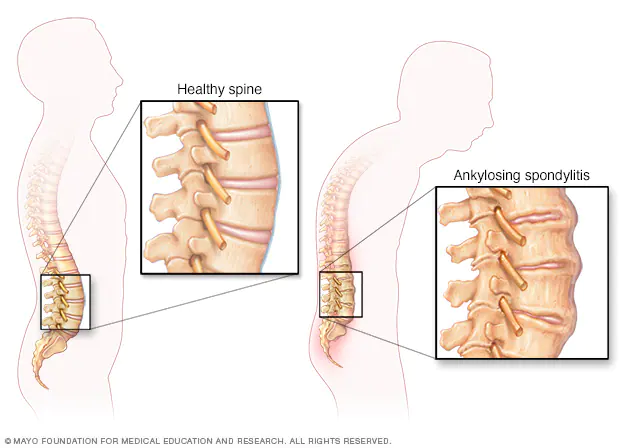
Ankylosing spondylitis is inflammatory arthritis that affects the spine and large joints. It causes pain, inflammation, and stiffness in the back and sacroiliac joints (joints that link your pelvis and lower spine). Over time, it can cause chronic back pain or cause the vertebrae to fuse. The fused spine becomes less flexible and turns into a hunched posture. If the ribs get affected, the person may experience breathing problems. The most common symptoms of ankylosing spondylitis are pain in the lower back, pelvis, and buttocks, although it can affect the entire body. The most important thing is to consult a rheumatologist, a doctor who specializes in treating patients with ankylosing spondylitis.
But along with the treatment, some lifestyle changes may also help you manage the symptoms and side effects of AS. Here are some tips to deal with them.
- Neck Stiffness
Your entire trunk up to your neck can be affected by AS. Although neck stiffness and pain usually occur very late after the other AS symptoms start showing up, some people, especially women, experience their AS with the start of neck pain, and then it starts spreading to other parts of the body. According to the experts, neck stiffness and pain are pretty common symptoms of AS. The good news is that you can treat this at home by using some stretching exercises. Practice stretching your neck muscles and joints with slow turning movements. To reduce the discomfort, stay active.
- Morning Stiffness
The person with AS experiences morning stiffness throughout the body, which makes it very difficult to even get out of bed. To overcome this issue, you have to follow your morning routine, which is to exercise daily. Regular exercise can help you slow down your disease’s development and help you maintain good posture. If you feel stiff when you wake up, try moving around to loosen your muscles first, and then exercise. You can take help from a physiotherapist for the right guidance.
- Rib Cage Pain
While living with AS, along with back pain, you may also experience pain in your ribs or chest. As the disease progresses, the person may experience swollen ribs, stiffness, and even fused spine or breast bones. This decreases your chest’s ability to expand fully and causes pain or discomfort while breathing. To enhance the expansion of the lungs, deep breathing exercises help a lot. If the exercise doesn’t help and the situation gets worse, you can visit a respiratory specialist for more help. They will help you learn good breathing habits and how to breathe through your diaphragm.
- Mid-night Pain
Pain in the middle of the night is very common among various people who live with AS. This is due to staying still for too long during sleep. When the person sleeps still for a very long time, the inflammatory chemical accumulates in the joints, causing pain and stiffness. If you are also having issues while sleeping, you must sleep on a firm mattress with either a flat pillow or no pillow. You can also use heating pads for comfortable sleeping. Regular exercise also helps in improving sleep during the night. Visit icare4u for more information.
